This is the third year in a row that in August you can read articles about L2Studio at the Storytelling Blog. It’s not a coincidence: it was during this hot summer month that the artistic adventure of my friend Lenka Gondova began, and L2Studio has just celebrated its second birthday. A milestone like this is a great opportunity to look back and see the most beautiful finished jewellery with L2Studio cabochons, however, there’s more today!
Have you ever held an L2Studio cabochon in your hands?
It is perfect, isn’t it?!
If you are not familiar with L2Studio cabochons yet, check out some of the reviews from Etsy:
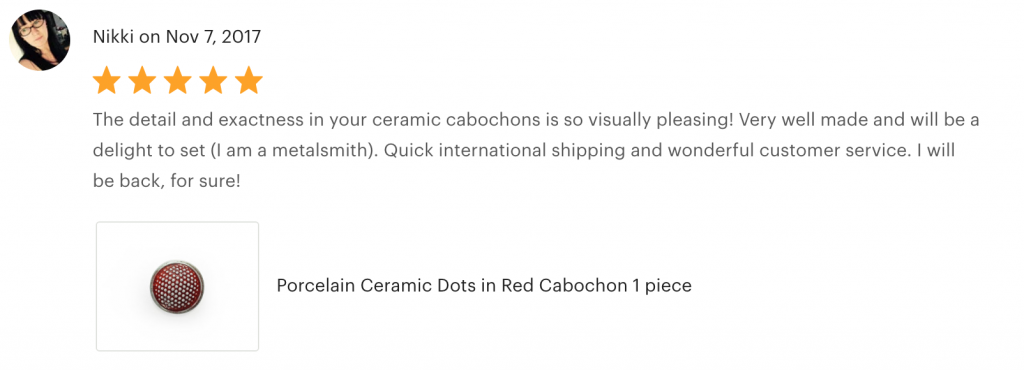
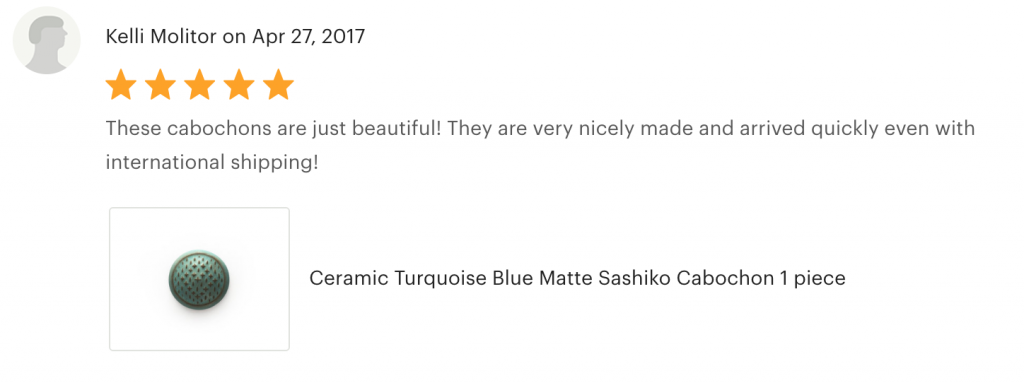
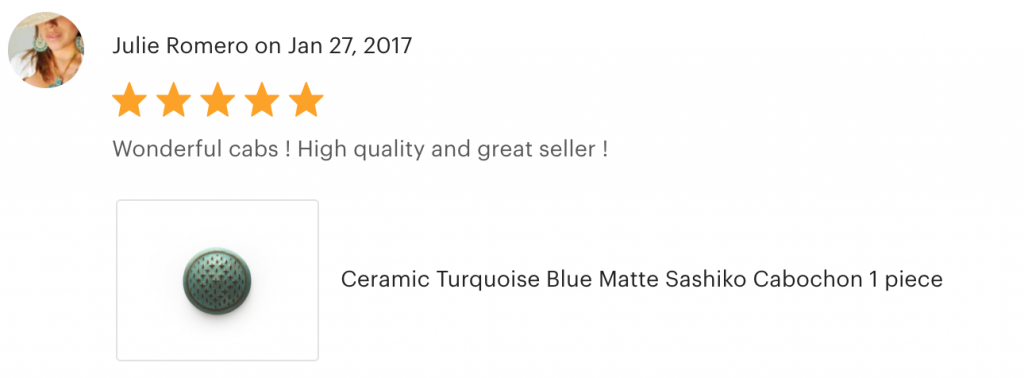
Lenka offered us a unique opportunity to have a sneak peek at her process,
and get to know more about how she makes the cabochons.
It’s a lot more challenging then you might think!

Each cabochon is formed with a mould. Designing and manufacturing a mould is a whole story in itself, but I will tell you about it another time! Today you can learn about what comes afterwards. I have to confess that before I visited Lenka’s studio I thought that it’s a lot more simple: you push the clay into the mould, fire it, paint it and that’s it, beading can begin. I was so very wrong!

After modelling the cabochons the material needs to dry before it goes to the kiln. When the cabs are dry enough, Lenka cleans every piece one by one. Then she starts to work with sand paper and rounds all the sharp edges, removes all the tiny bits of extra material.

At this stage it’s very important to handle the cabs carefully. Have you ever heard of clay memory? A slight deformation can cause further damage later! That’s why filling the kiln is such a long process. It takes about 30 minutes to fill the kiln. Since the kiln consumes a lot of energy, firing needs to be economical. That means about 200 pieces prepared for every batch.
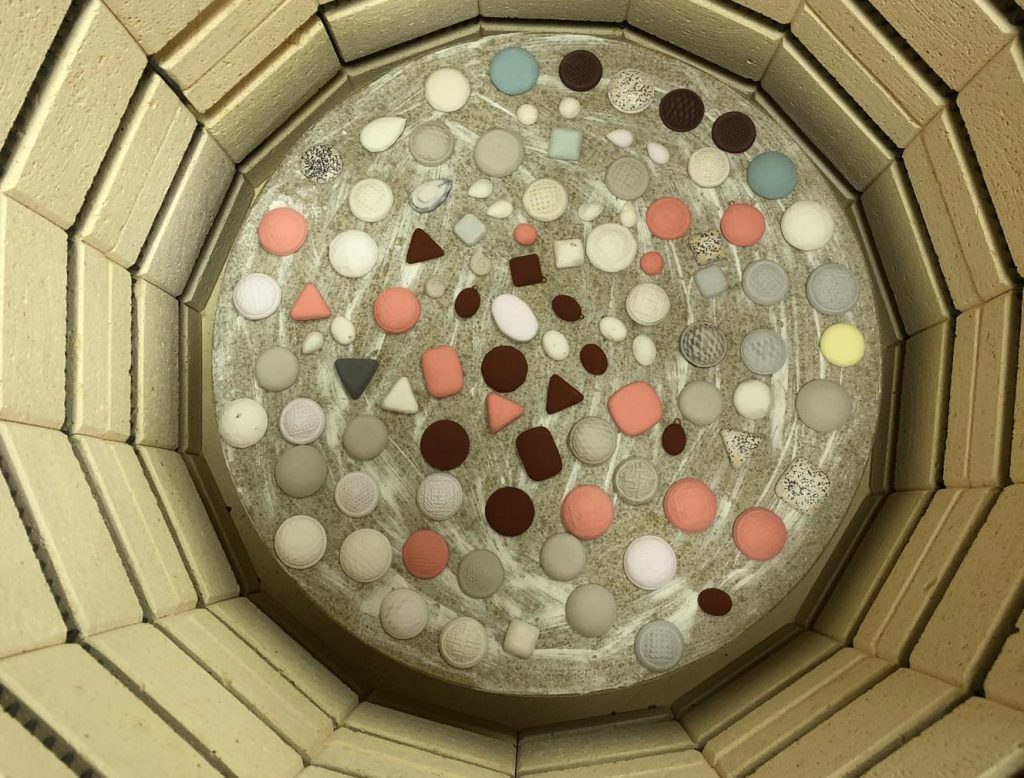
Removing cabs from the shelves of the kiln is a slow process, too: one bad move can have huge consequences. Unfortunately it happened before that all the cabs broke because of one mistake…

Choosing colours and glazing the cabs is the biggest fun, but also the most time consuming part of the process. More then the 2 minutes of cleaning for every cab before firing and the 30 minutes it takes to fill and another 30 to empty the kiln. Lenka has an amazing selection of paints and glazes. All of them need to to be tested on dark clay, light clay and porcelain. Different combinations of paints and glazes can produce very different effects. Some designs look best with one, some with another. If you know me, then you know that for me all of them look great in turquoise, but there are a lot of variations even for that one!
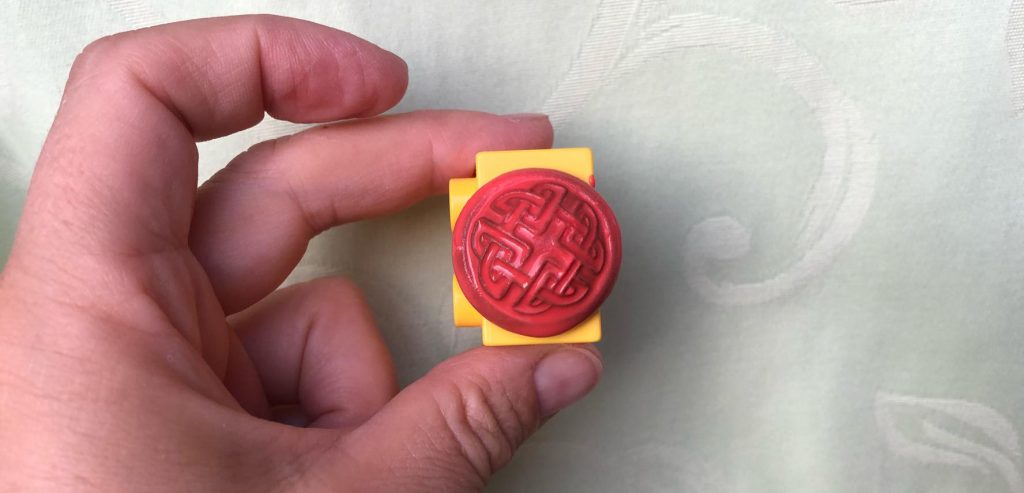
After glazing Lenka cleans the cabochons again: if she misses a spot on the bottom, then the cabochon can get fused with the kiln during the second firing, and removing it will brake not only the cabochon, but the shelf, too. After filling the kiln again, firing and gently removing the cabs the saddest part begins: the cabochons need to be sorted out. It means that about 40-50 percent of them will never get to a beader. Some of them get deformed because of clay memory (it can happen during the first and second firing, too), and sometimes the glazes and paints can misbehave. Bubbles can form, or the colour won’t be even because of the uneven temperature in the kiln itself.
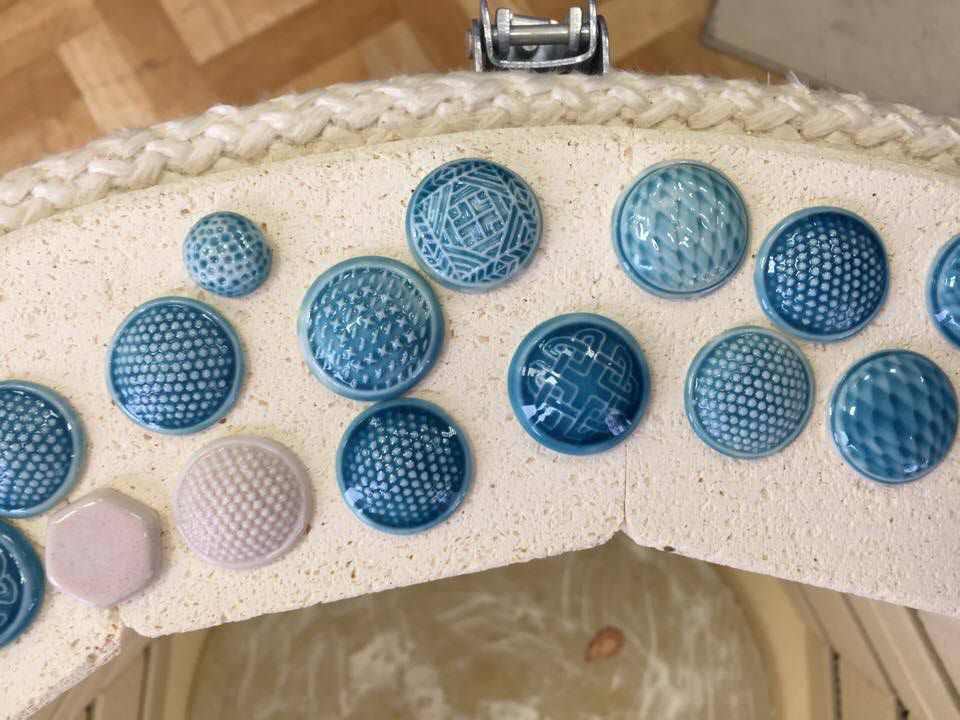
The cabochons are compatible with jewels I made using focal pieces from L2Studio.sk. For example the Istanbul medallion (which I attached to the fence of a beautiful Turkish Rococo well in Istanbul – my favorite place in the city) and the Asia pendant.
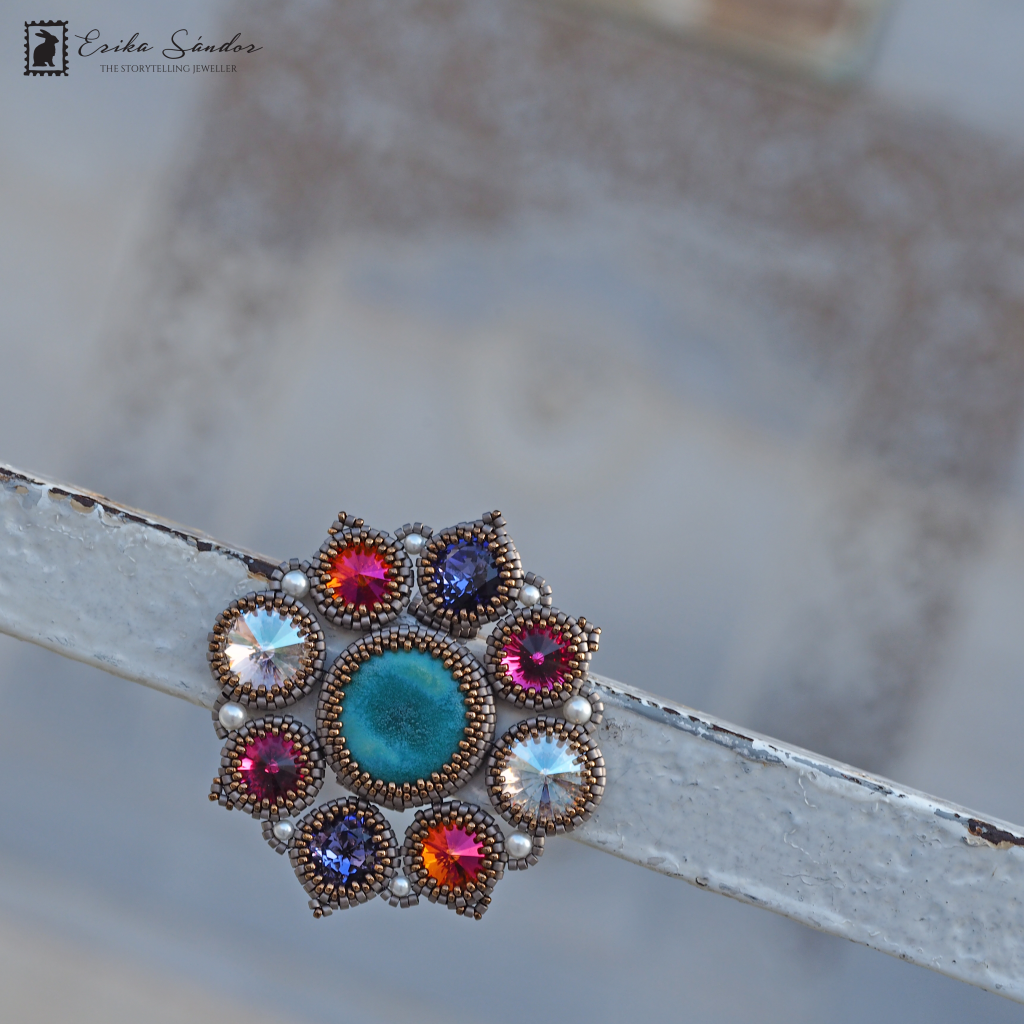
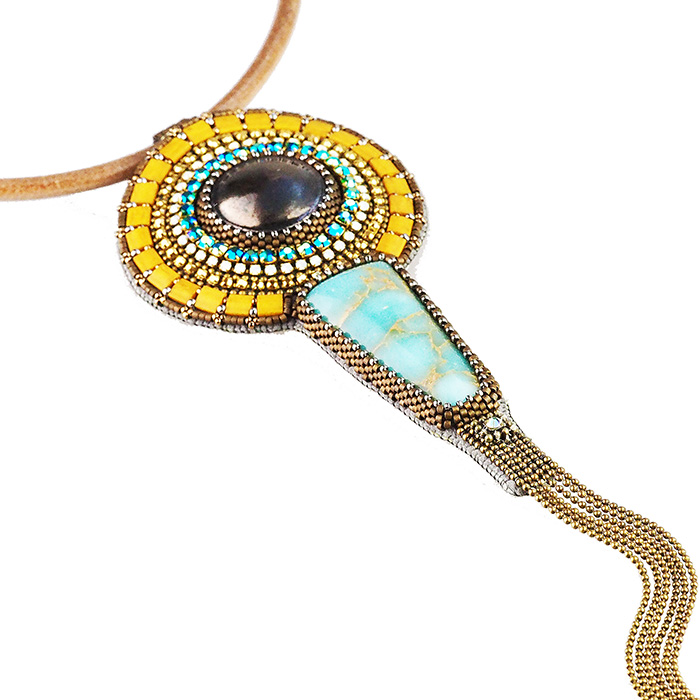
Check out the newest batch of cabochons here!
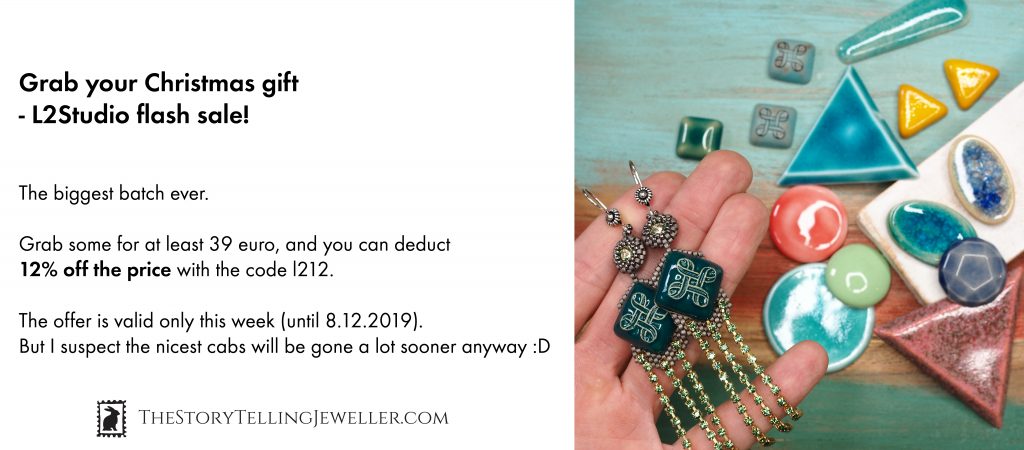
Which designs and which colors do you like the most?
And is there something more you would like to know about how these art quality cabochons are made?



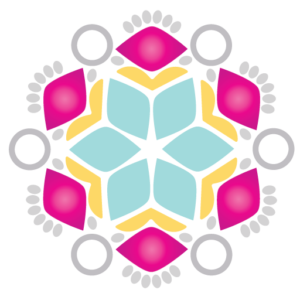
I love so many of them. The Celtic in avocado, also the Celtic in lt. clay in Crystal turquoise. Then there’s the faceted heart in Malve. And cannot forget the big edge L2 in Lavender on lt. clay. So many pretty cabs, so little time. It looks like a very detailed and fun process. I would have loved to have a business like this. Being creative everyday must be a fun life. Love your work!